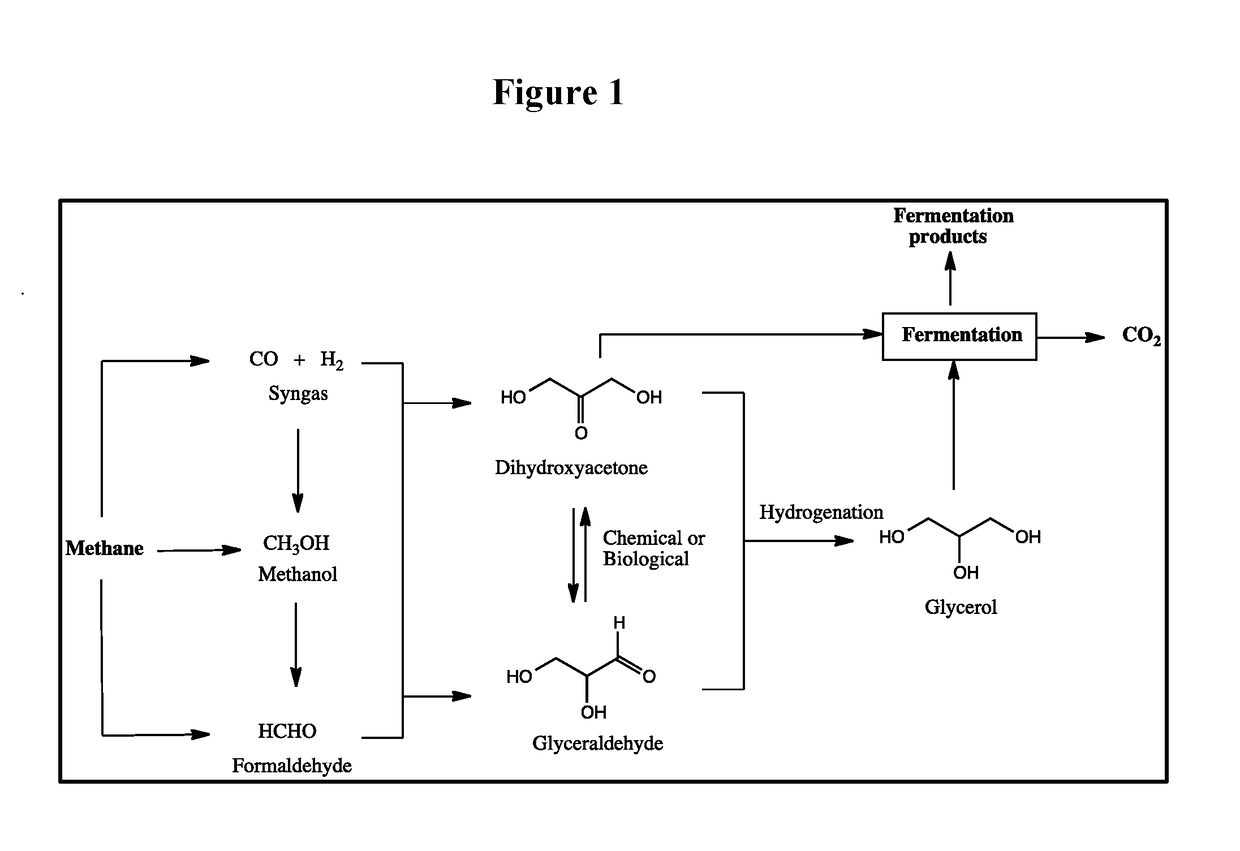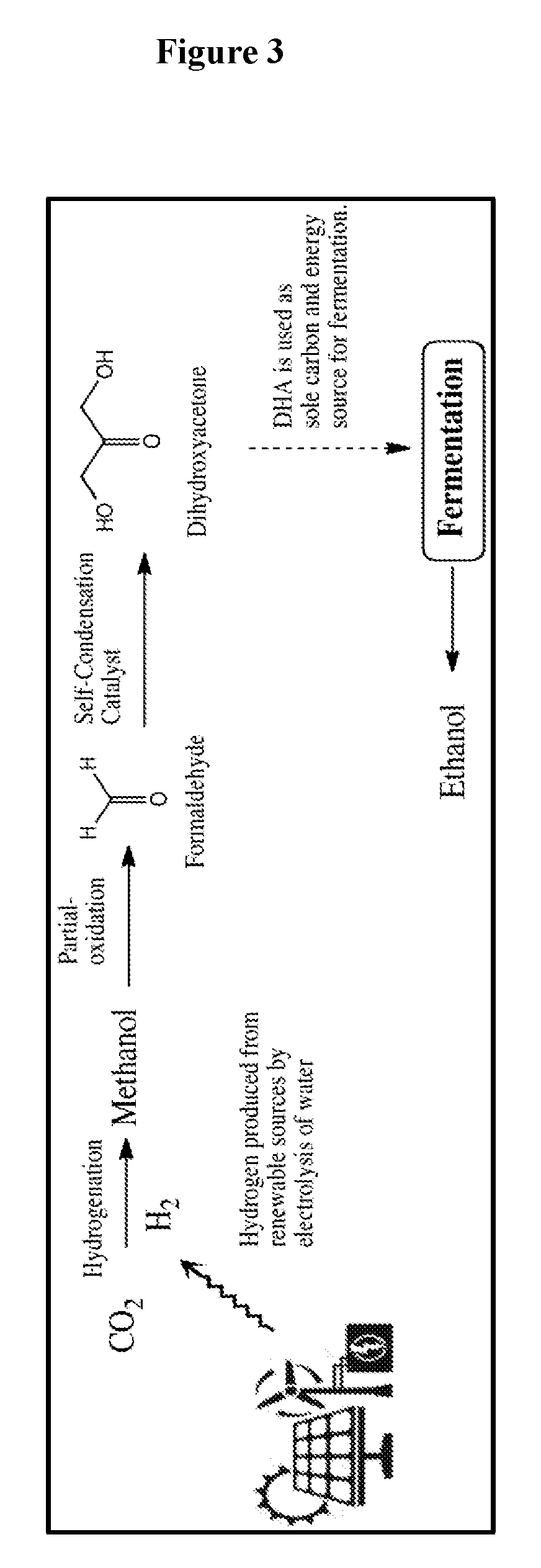Biological fermentation using dihydroxyacetone as a source of carbon
a technology of dihydroxyacetone and biochemical fermentation, which is applied in the direction of transferases, enzymology, bacteria based processes, etc., can solve the problems of insufficient maturity of the technology to produce fermentable sugars from cellulose, the cost of feedstock used in the fermentation process is generally over 50%-70% of the product cost, and the current process suffers from poor selectivity. , to achieve the effect of increasing the activity of one, facilitating the entry of dha,
- Summary
- Abstract
- Description
- Claims
- Application Information
AI Technical Summary
Benefits of technology
Problems solved by technology
Method used
Image
Examples
example 1
Production of Methanol from Methane
[0238]A diagram of the complete methanol plant, based on methane, natural gas or biogas is shown in FIG. 7. The methane or biogas is passed through desulfurization reactor (2) packed with zinc oxide beads. The gas is then heated in the central furnace (1) to approx. 420° C. From the furnace, the gas flows into the scrubber (4) to be saturated with the steam generated by water evaporator (3). Methane is heated in the furnace to 800° C. after being saturated with more steam to form desired mixture, and then directed into the reforming unit (5) for steam reformation reaction. Syngas at nearly 900° C. is then separated from excess steam by steam separator (6) and compressed to 60 atm by compressor (7) and is then combined with the unreacted reactants being recirculated from the methanol condenser and sent to two serially connected methanol synthesis reactors (8, 9). After the second synthesis reactor (9) the post reaction mixture is passed through wate...
example 2
Production of Formaldehyde from Methanol
[0239]A diagram of the complete formaldehyde production plant, based on methanol is shown in FIG. 8. Air is compressed to pressure by an air compressor and feed to the bottom of the methanol vaporizer (1). The ratio of methanol and air is maintained about 35-45%. This mixture is heated to the reaction temperature 550-600° C. by series of preheater before entering the reactor (2). The reactor is a fixed bed type filled with silver catalyst used for converting methanol to formaldehyde. The product stream from the reactor is sent to the absorber (3) where the gaseous formaldehyde is absorbed into dioxane to form 30% formaldehyde solution. The product stream is sent to purification and recovery section (4). Unreacted methanol is fed back to the process at methanol vaporizer. Formaldehyde is obtained as heavy end of the alcohol stripper column. The final formaldehyde preparation is in the form of 30% solution in dioxane. This process gives an overa...
example 3
Production of DHA from Formaldehyde
[0240]3-hexylbenzothiazolium bromide (5.0 g, 16.7 mmol), triethylamine (2.3 ml, 16.7 mmol) and dioxane (50 ml) are heated at 80° C. under nitrogen and stirred for 12 h. After cooling, the precipitated triethylammonium bromide is filtered. The filtrate is used as a catalyst solution. 30% formaldehyde solution in dioxane (450 ml) is heated to 100° C. under nitrogen and then catalyst solution (50 ml) is added. The mixture is stirred at 100° C. for 1 h. After 1 h, dioxane was removed and the reaction mixture was analyzed by HPLC. Analysis of the reaction mixture showed that the yield of DHA is 85% and the conversion of formaldehyde is 99%. The reaction mixture is evaporated to remove the solvent. The residue is poured into water (500 ml) and extracted with dichloromethane (100 ml) three times to recycle the catalyst. The aqueous solution is used directly in the following step.
PUM
 Login to View More
Login to View More Abstract
Description
Claims
Application Information
 Login to View More
Login to View More - R&D
- Intellectual Property
- Life Sciences
- Materials
- Tech Scout
- Unparalleled Data Quality
- Higher Quality Content
- 60% Fewer Hallucinations
Browse by: Latest US Patents, China's latest patents, Technical Efficacy Thesaurus, Application Domain, Technology Topic, Popular Technical Reports.
© 2025 PatSnap. All rights reserved.Legal|Privacy policy|Modern Slavery Act Transparency Statement|Sitemap|About US| Contact US: help@patsnap.com



